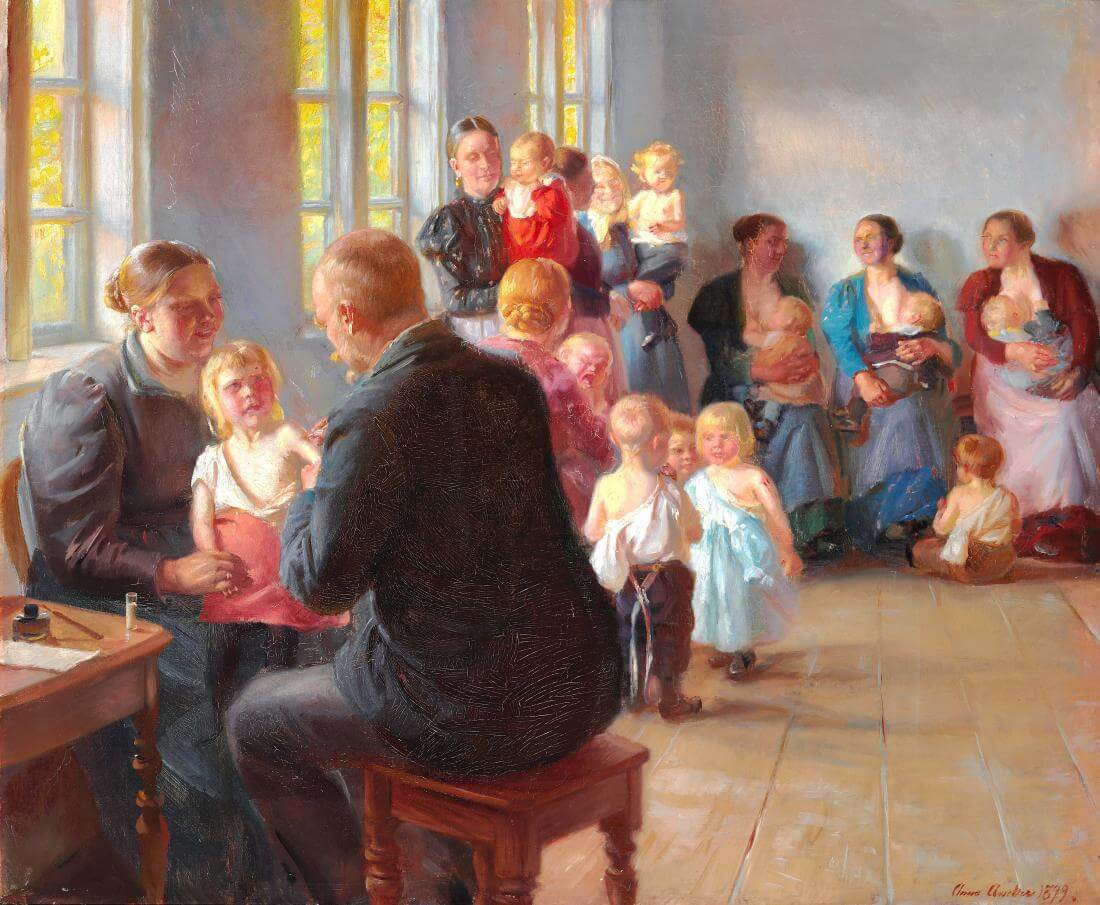
As previously mentioned, this work is often considered in the theme of “community”, or “everyday life”. This may lead us to think that there was not a medical significance within the painting, but only a new aspect, a variation on the usual themes of Anna Ancher – social subjects and life in Skagen, which also included visits to the doctor.
Actually, there are probably more levels of significance. Nowadays, we rediscover this painting for its meanings and roles, that can be both similar and different to those of more than a century ago. Ancher may have meant to represent the advance of medical sciences in her time, a subject also visible in many other European painters’ works. In a sense, this Danish masterpiece could be a celebration of medicine among similar ones from across the whole continent.
However, Ancher surely wanted to represent social life and responsibility towards collectivity. Only a single reviewer at the beginning of the 20th century pointed out this social aspect, enhancing how vaccination is an expression of being aware of social responsibility. In fact, being vaccinated benefits not only the recipient but also the entire community.
Moreover, the painter underlines how children are an essential part of public health and, perhaps, suggests how these “next-generation adults” will be responsible for others again in their time.
Last but not least, the title does not include any reference to a specific event, place, or situation. The model for the doctor could have been Ancher’s husband, Michael. This probably indicates that it was not important who the doctor was, but that he was a doctor performing vaccinations. In other words, this work is the portrait of a general (and generable) situation – a vaccination. The subject is unique in Ancher’s career. She never painted any other medical subject again, and just a few other times did she represent so many figures. This painting includes quite a large number and variety of figures, however, her pieces were generally smaller and more intimate, portraying only one or two people.
Nowadays, the painting could be seen as emblem of both advances in public health and social responsibility. It even has acquired a stronger value during the COVID-19 pandemic. It reminds us to get vaccinated for ourselves and, of course, for the whole community.
